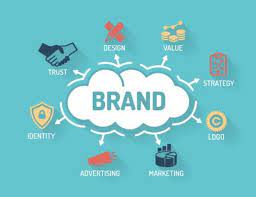Hello!
The meaning of the word "Brand" has undergone a metamorphize in recent years. The importance of what your brand does has now been replaced by how it's perceived, leaving those relying on their brand's strength for success with only two options:
Transform into a modern company that draws the viewer's attention by presenting itself in a way that promotes a positive audience interaction; Or risk being left behind like an empty exoskeleton of the company you should have become.
Option two doesn't sound too appealing, but those are your choices! To help you transform and evolve, we've provided you with the 6 essential elements you need to build a strong brand.
1. Audience
The most apparent change in marketing that directly influences a brand's success is the requirement to deliver content that your audience needs, rather than what you want to tell them. You find the content your target market's reading and interacting with by reviewing your competing brands on content analysis websites, like BuzzSumo.
 Websites like this provide you with the following information:
Websites like this provide you with the following information:
· Discovery: Discover the highest-performing content within your marketplace. Better content = more likes and shares.
· Research: The ability to analyze billions of analytical data points, enabling you to laser target your future marketing strategies.
· Monitor: Your competitors, track mentions, industry updates, and trends, so you never miss an opportunity to improve your content and interact with your audience.
· Influencers: Find the right influencers, proven to be genuine authorities within your market with verified engagement figures that will boost your campaigns.
When you have this data, your next step is to boost your brand awareness, and you start by placing your marketing strategies on the right platforms.
To find out exactly which platforms your target market is using, look at Social media analytics and Google analytics. Together they'll tell you where your audience is and the best way of reaching them. But you can figure out where you'll get the best return on your dollar by merely applying a little bit of marketing knowledge.
For instance, your target audience has a problem, and they go online to look for a solution. If your audience is teenage-based, promoting your brand on gaming sites might be worth considering; however, if they're new moms, focusing on wellness forums and parenting websites could provide you with a better ROI.
2. Visual Identity
We are visual creatures and if you want to develop a strong and unique brand identity, you need to develop strong visuals and it starts (But not limited to) with logos.
Logos are no exception to build a strong brand that can compete in the modern world. Gone are the days when a logo was just a prestige symbol on an expensive article of clothing; today's logos have a far more vital role to play.
 Now you need a logo that can be used throughout your marketing strategies, creating cohesion across multiple platforms, making your content instantly recognizable to viewers.
Now you need a logo that can be used throughout your marketing strategies, creating cohesion across multiple platforms, making your content instantly recognizable to viewers.
Simplicity is the key to designing such a logo, as this gives it versatility and scalability, suitable for all your on and offline marketing strategies. Think of your social media avatar, website header, email signature, packaging, banners, and business cards when designing it, what colors work for your market, which fonts connect with your audience, and what logotype work for your brand.
You can save yourself a lot of time and avail of a wealth of designer experience using an online logo design tool. Now powered by AI machine learning technology, these tools know the most up-to-date trends and which design elements apply to what market.
And you can further your logo research by looking at the leading brands in your market place. You'll quickly see common trends, colors, and fonts, specific design tactics proven to engage your audience.
3. Clear Goals
You can't build a strong brand without first having a clear picture of their end goal. It's because it takes focus, knowledge, and determination, and those only come with knowing where it is you want to go.
 But clear goals can do more than provide you with your why and how.
But clear goals can do more than provide you with your why and how.
Modern consumers gravitate towards brands with similar values; this is why your marketing campaigns need to reflect them in a way that resonates with your audience on numerous emotional levels. It's how brands create communities, ones that become loyal followers and lifetime customers.
Your goal is to find, create, and promote your brand's values, then infuse it into every piece of content you produce. Packaged in such a way that it shows the essence of who you are and what you stand for. It's how you'll connect with your audience, so it has to be clear and concise.
By having values that your audience and community can relate to, you're giving them a reason to champion your brand, and it gives your employees something to believe in too!
Let's dive a little deeper and discover why your brand needs values and how to find them.
4. Brand Values
Odds are you're not the only company in your marketplace; therefore, you have to convince consumers to buy into your brand rather than your competitors, so far nothing new right. One option is to take the "go with the herd" approach, using aggressive marketing strategies, competitive pricing, and unique selling points; they all have their place, but as we said, nothing new.
Let's look at your other option:
An essential piece of the brand-building jigsaw is to be more than just the product or service you're providing; yes, we're talking about brand values. If your thoughts on this go no further than an "About Us" page and an exercise in vanity, then it's time to think again.
Why do people choose Ben and Jerries, Starbucks, or Tom's shoes?
After all, you can get better ice cream, coffee, and shoes, because it's not the quality that's the point; it's the brand behind the products, specifically their values. Building relationships with your consumers and your employees is the key because it's those that build brand longevity. You create these relationships by being transparent and authentic with your values, telling people the whole story, and going further than just an About Us page!
 Consumers want to know the following about your brand:
Consumers want to know the following about your brand:
· Purpose: Why you're in the market? If it's to provide the cheapest version of a particular product, then tell them, that's ok. If it's to donate a percentage of every sale to the Green-world plant a tree foundation, then make sure they know it, be proud of your purpose.
· Mission: It's another word for your end goal, so what is it? Cheapest product = providing better value to your customers / Plant a tree = Re-establishing green belts and improving biodiversity.
· Vision: It's how you're going to make either of those things happen. Cheapest product – How you're going to the source to get a lower rate / Plant a tree – By actively supporting the Green-world project, providing free advertising for their cause, running fundraisers, etc.
· Values: All the above lead back to here. Package them to clearly show who you are, what you do, and how you do it.
 Having ethically sound values is one thing; articulating them is another, and it's where many brands get it wrong. A mission statement buried deep within your website is of no use to you; your values should be up-front and center. If you want to build a strong brand, create a one-liner (A tag line) connected to your values, post content about them so your community can like and share them; by doing so, you'll give them their reason for believing in you.
Having ethically sound values is one thing; articulating them is another, and it's where many brands get it wrong. A mission statement buried deep within your website is of no use to you; your values should be up-front and center. If you want to build a strong brand, create a one-liner (A tag line) connected to your values, post content about them so your community can like and share them; by doing so, you'll give them their reason for believing in you.
5. Memorability
 Consumers are six times more likely to buy from a brand they know, and three-quarters make their purchasing decisions based on what those brands tell them. These statistics might leave you feeling a little disillusioned; unfortunately, it gets even worse!
Consumers are six times more likely to buy from a brand they know, and three-quarters make their purchasing decisions based on what those brands tell them. These statistics might leave you feeling a little disillusioned; unfortunately, it gets even worse!
Google actively promotes larger brands regardless of who's providing the most relevant content. Add those facts all together, and you might think there's not a lot of consumers left over for everyone else, right? Wrong!
You see, you don't have to be a major player to become a memorable brand; you don't even have to compete with advertising or price! All you have to do is find your audience, create your brand around their needs, tell them your values, provide excellent customer service, and use authentic marketing strategies.
6. Stay in Touch With Your Community
Another way of ensuring you stay at the forefront of your customer's memory is staying in touch.
We're not talking about spam emails here; that's had its day. It's about staying active with your online communities, posting relevant and helpful content, promoting resources that might be of use to them as well as your own, and actively encouraging your past consumers to leave feedback, comments, and questions.
Again, it all comes back to being more than just a brand that sells a product; it's about creating a perception that your consumers will buy into.
Final Thoughts about Brand Building
 When building your brand, you want to think long term. Having a strong brand is not something that you build one day and forget about the following one. Consistency is crucial to build a powerful and long-lasting brand identity. First, you have to think about your audience and the message that resonates with them. Then, you want this to fit with your company’s vision, values and goals. Once you’ve defined those, you can build your brand around it by choosing the right colors, crafting the right message, designing the right creatives and start building a loyal community.
When building your brand, you want to think long term. Having a strong brand is not something that you build one day and forget about the following one. Consistency is crucial to build a powerful and long-lasting brand identity. First, you have to think about your audience and the message that resonates with them. Then, you want this to fit with your company’s vision, values and goals. Once you’ve defined those, you can build your brand around it by choosing the right colors, crafting the right message, designing the right creatives and start building a loyal community.
Pay attention to the selection of top articles on Quasa Media:
- 6 Technologies To Improve Your Branding
- How to Boost Your Brand Reputation if You Are a Small Business?
- Brand Marketing and Performance Marketing in a Nutshell
- Why Metaverse is Rising: Crypto, NFT, and Big Brands
- 7 Tips for Protecting Your Brand Against Cyberattacks
- 7 Effective Tactics For Humanizing Your Brand (With Examples)
- 5 Ways to Increase Brand Awareness Using NFTs
- How to Successfully Rebrand Your Business
Thank you!
Subscribe to our newsletter! Join us on social networks!
See you!






